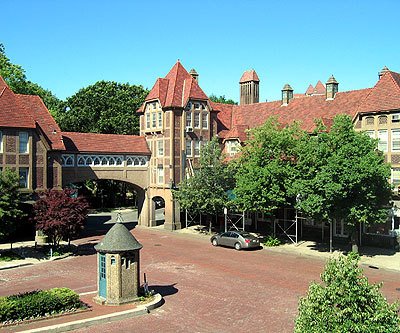Views
Return to Forest Hills Homepage Forest Hills was a 600 acre plot of land originally called Whitepot when it was settled in 1652. Frederick Backus, George Backus and Horation N. Squires owned it, and in 1906, the Cord Meyer Development Company purchased the land. They renamed the area Forest Hills after its proximity to Forest Park. Architects Roger Tappan and William Patterson were hired to build up the neighborhood.
Forest Hills Gardens
Margaret Olivia Slocum Sage,the wife of Russell Sage bought a section land south of Queens Boulevard. Inspired by the book, "Garden Cities", she intended to create a development for working-class named Forest Hills Gardens. Frederick Law Olmstead, Jr. was the architect hired to develop these 142 acres of land for this model residential community. This plan turned out to be a short-lived plan because of the rising costs of land and construction details, which included expensive design elements on the houses such as terra-cotta-tiled sloping roofs. The Russell Sage Foundation added picturesque visuals to the nighborhood setting. This included period lamposts, winding cobblestone streets and lanes, a town square, and village greens. Also, the Long Island Railroad had a stop at Station Square, acting as a gateway to Forest Hills Gardens. President Theodore Roosevelt gave a speech in support of America's involvement in World War I from this station.
Only a few blocks from the station was a graceful tutor building that houses the West Side Tennis Club. It was not until 1923 that the stadium would open and become world-renowned. Famous figures who lived in Forest Hills Gardens include Helen Keller; Dale Carnegie; John F. Hylan; entertainer Fred Stone; famed sculptor Adolph A. Weinman, and Geraldine Ferraro.
While it was originally known to be a rather exclusive neighborhood, Forest Hills is now considered very diverse, the 6,000 residents come from all over the world.
